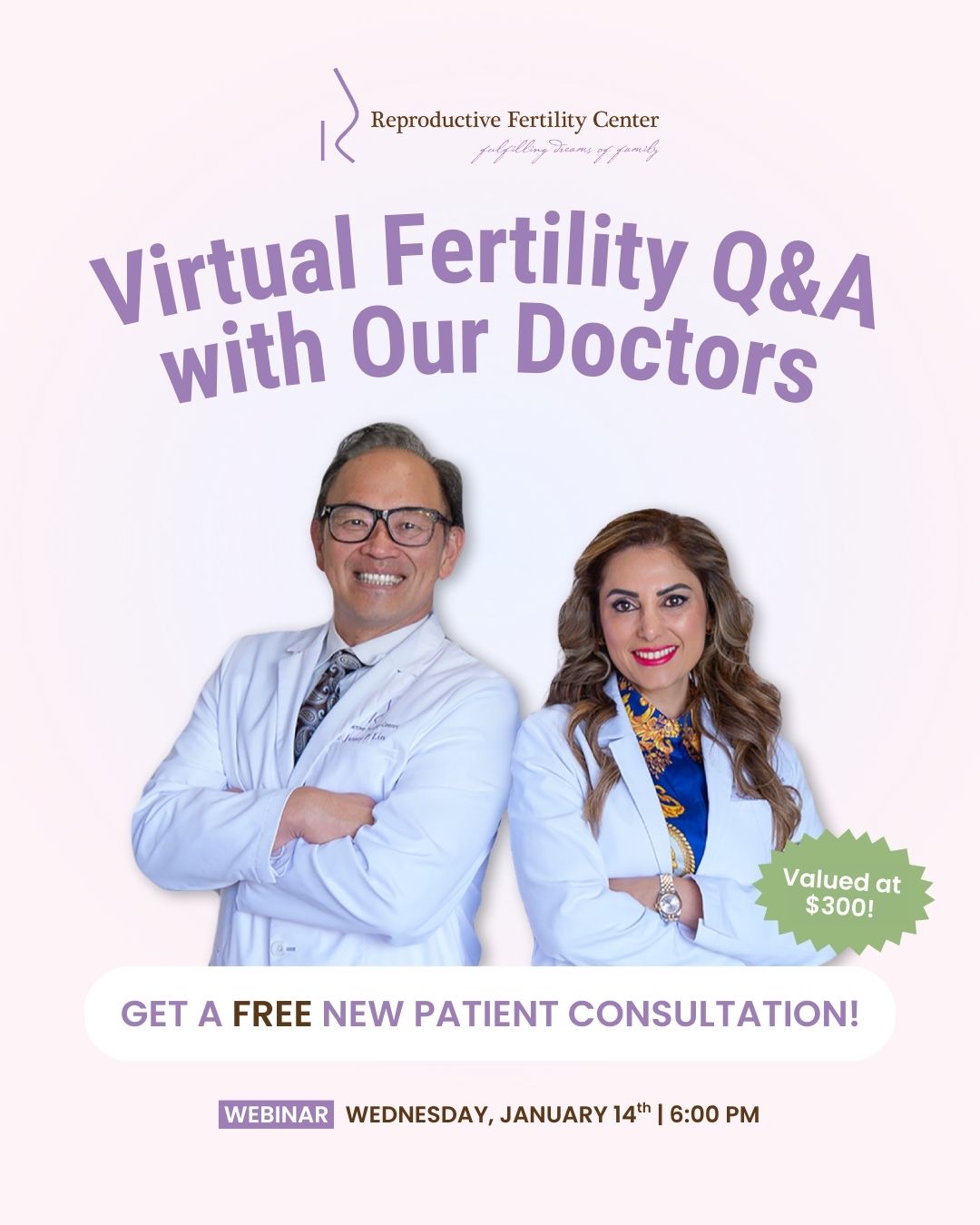If you’ve been trying to conceive for over a year, or if other fertility treatments have not been successful, it may be time to explore in vitro fertilization (IVF). It has helped millions of patients become parents worldwide, so please keep reading to learn more about it.
What Is IVF?
“In vitro” is Latin for “within the glass.” In vitro fertilization is a multi-faceted process that helps couples and individuals conceive a baby with the help of fertility experts.
In basic terms, to create an embryo, the patient takes hormone medications to stimulate the ovaries and grow multiple follicles that contain eggs. The fertility doctor then retrieves the mature eggs, and the embryologist injects or “fertilizes” the eggs with the partner’s (or donor’s) sperm in a laboratory. Embryonic development is carefully monitored for 5 to 6 days, and the resulting embryos are often cryogenically frozen to ensure optimal timing for the transfer procedure. This process is called an “IVF cycle.” For many patients, it is not unusual to undergo more than one IVF cycle.
When the timing is right, the fertility doctor then inserts the carefully thawed embryo into the patient’s uterus. Hopefully, nature will take its course, resulting in the implantation of the embryo and a successful pregnancy. This process is called the “FET” or Frozen Embryo Transfer. The best fertility doctors and embryologists have years of training and experience in assisted reproduction technology (ART). At the Incinta Fertility Center, our elite doctors, embryologists, and nurses do everything possible to support your dreams of family.
What Are the Steps With IVF?
Each step in the IVF process involves careful monitoring and decision-making to maximize the chances of a successful pregnancy. A nominal IVF cycle typically takes approximately four to six weeks from the start of ovarian stimulation to the pregnancy test.
While it may vary from patient to patient, here’s a general breakdown of the timeline:
1. Ovarian Stimulation (two – three weeks)
This phase usually begins with the administration of hormone medications like menopur and gonal-F to stimulate the ovaries to produce multiple mature eggs. Normally done by injections at home, the process generally takes 10 – 14 days, during which time the patient has regular monitoring appointments, including blood tests and ultrasounds.
2. Trigger and Egg Retrieval (one – two days):
Once the eggs are mature, a “trigger shot” of human chorionic gonadotropin (hCG) or another medication is given to induce final maturation and ovulation. The egg retrieval is scheduled approximately 34 – 36 hours after the trigger shot, and the procedure is performed with the patient under general anesthesia.
3. Fertilization and Embryo Culture (three – six days):
After the eggs are retrieved, they are fertilized in the lab. The fertilized eggs (embryos) are then cultured for a few days to mature to multi-cell embryos or “blastocysts.” The resulting embryos are often cryogenically frozen to ensure the best time for transfer, allow the patients’ ovaries to “quieten” and, potentially, PGT-A or genetically test the embryos to see if they are chromosomally normal.
4. Frozen Embryo Transfer cycle (two – three weeks):
This phase also involves the administration of hormone medications to prepare the woman’s uterus to ensure optimal conditions for transfer and successful implantation of the selected embryo.. The embryo is then carefully thawed, and the transfer procedure is fairly quick and painless, usually requiring no sedation and minimal recovery time.
5. Luteal Phase and Pregnancy Test (two weeks):
After the embryo transfer, patients enter the luteal phase, during which they receive progesterone support. Approximately four days after the transfer, the patient returns to the clinic for a blood test to determine if the patient is pregnant. This checks the beta-HcG or pregnancy hormone.
Who Is Involved During the IVF Cycle?

An IVF cycle is a complex process, and it involves a team of fertility specialists to carry it out. So, who is needed?
- Fertility Doctors. They are responsible for the diagnosis, treatment plan, egg retrieval, implantation, and overall care. At Incinta, we have world-renowned physicians with decades of experience.
- Lab Directors. Most fertility clinics have an experienced lab director who oversees a team of dedicated embryologists. They are an essential part of the care team, and Incinta has some of the best!
- Nurse Practitioners, Surgical, and Fertility Nurses. Fertility treatments require nurses who specialize in reproductive medicine. While they facilitate surgery assistance, blood tests, and ultrasounds, they also hold a patient’s hand when needed.
- Patient Relations Specialists. Incinta has a dedicated team whose job is to help guide and support the patient’s fertility journey.
Is IVF Expensive?
While insurance may help lower the costs of an IVF cycle, it can still be fairly expensive. In California, depending on the medications needed and other factors, IVF costs range anywhere from $15,000 to $30,000 per cycle. Fortunately, Incinta has relationships with third-party financing companies that can assist patients in need.
In Summary
Every fertility journey is unique. Couples and individuals experiencing prolonged infertility issues may require IVF treatment. It is a complex process that requires specialized medical experts to retrieve, fertilize eggs, and then transfer a healthy embryo into the patient’s uterus. While an IVF cycle generally takes approximately four to six weeks, the specific timing can vary depending on individual responses to treatment and specific protocols used by the fertility clinic.
At Incinta Fertility Center, you can rest easily knowing you’re receiving the best care from the best fertility clinic. Our team genuinely cares about your dream of having a family. Schedule a consultation today at (424) 212 – 4087 or email us at contact@incintafertility.com

